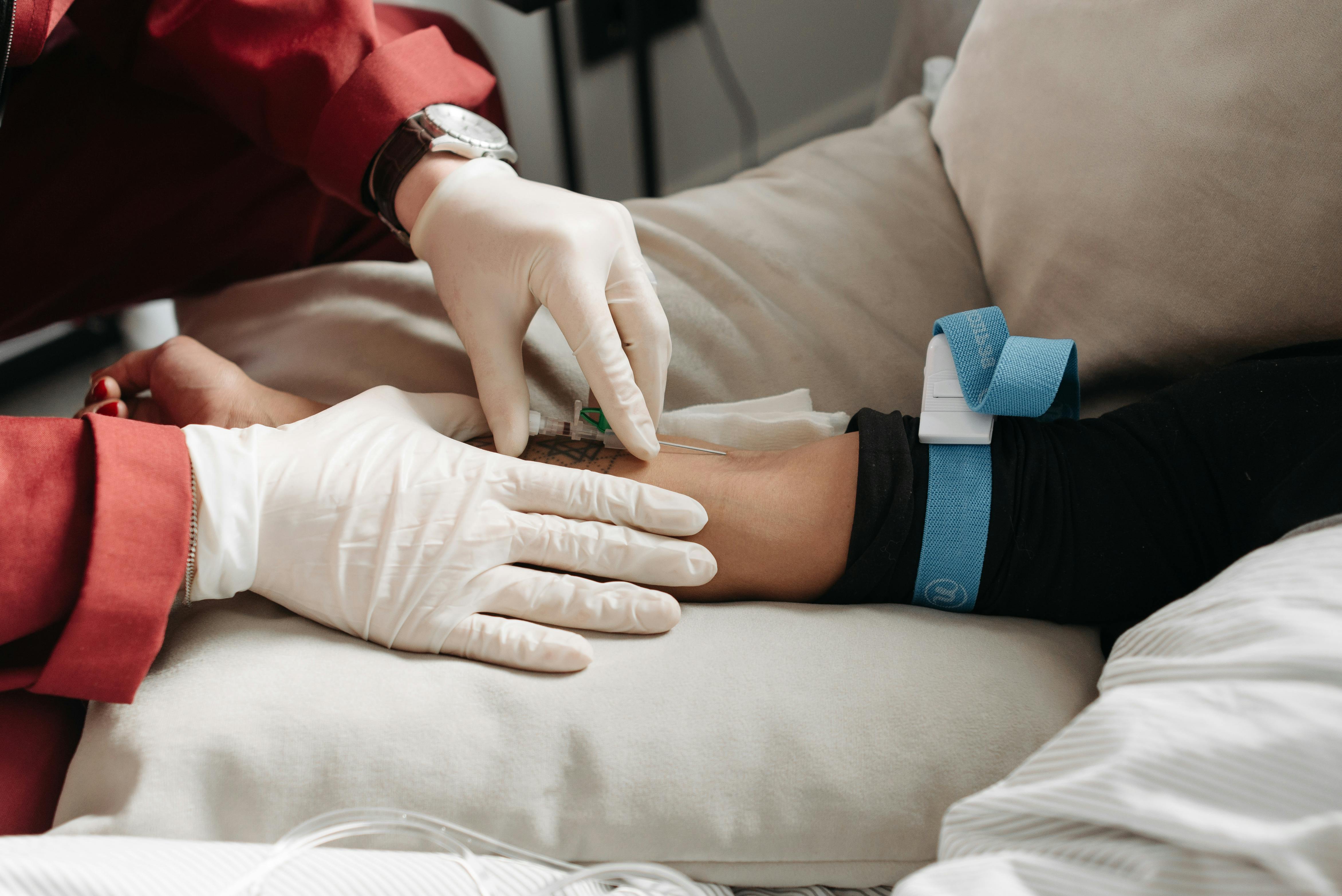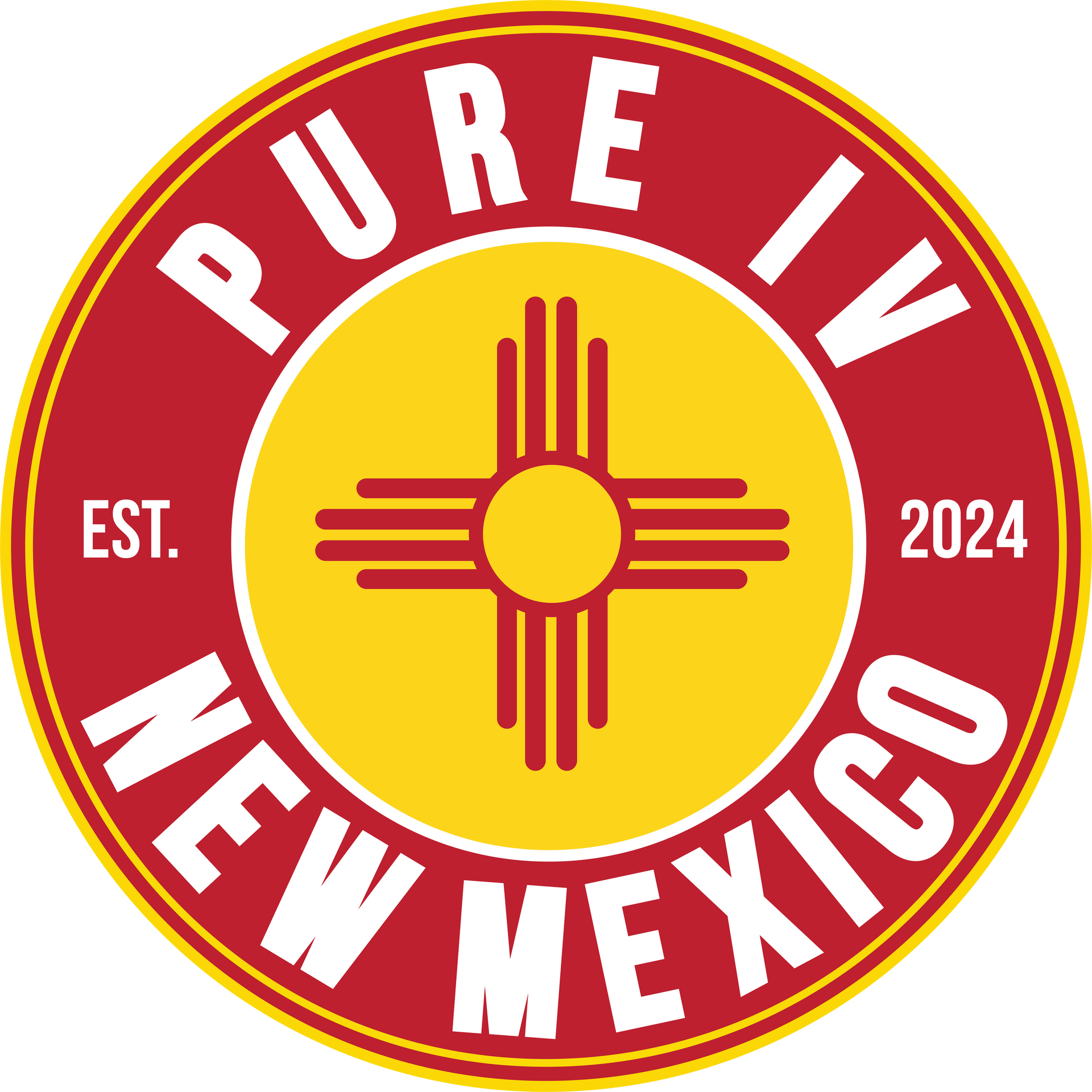Intravenous Therapy for Dehydration: Fast Relief When You Need It Most

Medically reviewed by Micaela Strevay, FNP-C, PMHNP-BC
Table of Contents
Understanding Dehydration and When IV Therapy Becomes Essential

IV therapy for dehydration delivers fluids directly into your bloodstream when you're severely dehydrated. Here's what you need to know:
| What is IV Therapy for Dehydration? | When It's Needed |
|---|---|
| A procedure that administers fluids, electrolytes, and sometimes medications directly into your veins | Severe dehydration cases where oral intake is insufficient |
| Bypasses the digestive system for immediate absorption | Persistent vomiting or diarrhea |
| Typically uses saline solution with electrolytes | Heat exhaustion or heat stroke |
| Can be administered in hospitals, urgent care, or via mobile services | Inability to keep fluids down |
| Provides 100% absorption compared to 20-30% from oral intake | Signs like dizziness, rapid heartbeat, or confusion |
Water makes up approximately 60% of the adult human body, and maintaining proper hydration is crucial for nearly every bodily function. When you lose more fluids than you take in—whether through illness, intense exercise, or extreme heat—dehydration can quickly set in.
Did you know that about 75% of Americans are chronically dehydrated? Most people don't realize they're dehydrated until symptoms become noticeable.
Mild dehydration symptoms include thirst, dark urine, dry mouth, headache, and fatigue. If left untreated, dehydration can progress to more severe symptoms like:
- Extreme thirst
- Very dark urine or no urination
- Dizziness and lightheadedness
- Rapid heartbeat
- Confusion or disorientation
- Sunken eyes
- Low blood pressure
When oral rehydration isn't enough or isn't possible, IV therapy for dehydration becomes the most effective solution.
I'm Joseph Lopez, co-founder of Pure IV New Mexico, where we specialize in mobile IV therapy for dehydration delivered directly to clients across New Mexico by licensed medical professionals.

IV Therapy for Dehydration: What It Is and When It's Necessary
Have you ever felt so parched that no amount of water seemed to help? That's where IV therapy for dehydration comes in—it's like a superhighway of hydration that bypasses all the traffic.
IV therapy for dehydration delivers fluids directly into your bloodstream through a tiny catheter in your vein. Unlike drinking water, which takes a scenic route through your digestive system, IV fluids jump straight into action where your body needs them most.
When your body loses more fluid than it takes in, you become dehydrated. This throws off your electrolyte balance—those tiny but mighty minerals that keep everything from your heart to your muscles working properly.
Mild cases might just leave you feeling thirsty and tired—usually fixable with a few glasses of water. Moderate dehydration often needs electrolyte-rich drinks. But severe dehydration? That's when IV therapy for dehydration becomes potentially lifesaving.

Hospital use of IV rehydration varies dramatically depending on who needs it and why. For children, IV use ranges from 4.5% to 100% of dehydration cases, while adults see similar variation. Kids most commonly need IV fluids when stomach bugs like rotavirus leave them dehydrated.
You might need IV therapy for dehydration if: - You're experiencing severe symptoms like fainting or heat stroke - Your body can't keep fluids down because of persistent vomiting or diarrhea - You've lost significant fluid from excessive sweating, burns, or conditions like uncontrolled diabetes - You can't drink properly due to confusion or difficulty swallowing - You need rapid rehydration in an emergency situation
Our youngest and oldest family members need extra attention when it comes to hydration. Children sweat more quickly than adults, while seniors naturally retain less water as they age.
Here in New Mexico, our beautiful dry climate comes with a hidden cost—we dehydrate faster! The low humidity and high elevations mean your body loses moisture even when you don't feel like you're sweating.
Benefits of IV Therapy for Dehydration at a Glance
When you're truly dehydrated, IV therapy for dehydration offers impressive advantages:
- It's incredibly fast. While water takes up to an hour to fully absorb, IV fluids start working immediately
- Your body gets exactly what it needs with precision—carefully calculated amounts of essential electrolytes
- Relief is often dramatic and immediate—headaches, dizziness, and fatigue can disappear quickly
- We can customize your treatment based on your specific needs
- Proper IV hydration can shorten hospital stays, with estimated annual savings of over $1.14 billion for elderly patients
Potential Risks of IV Therapy for Dehydration
While IV therapy for dehydration is generally safe when provided by trained professionals, it's important to understand potential risks:
- Small risk of infection at the IV site
- Possible thrombophlebitis—inflammation of a vein due to a blood clot
- Fluid overload concerns, especially for those with heart or kidney conditions
- Electrolyte imbalances if the IV solution isn't properly formulated
- Occasional catheter displacement causing fluid to leak into surrounding tissue
At Pure IV New Mexico, our licensed professionals ensure you're receiving treatment that's appropriate for your specific situation.
Choosing the Right Fluid: Crystalloids, Colloids & Specialty Solutions
When it comes to IV therapy for dehydration , not all fluids are created equal. The right solution can make all the difference in your recovery!
The type of fluid used depends on several factors: how dehydrated you are, your age, underlying health conditions, and what caused your fluid loss. Here are the main options we consider at Pure IV New Mexico:
Crystalloid Solutions
Crystalloids are our go-to fluids for most dehydration cases. These solutions contain small, dissolved molecules that move freely between your bloodstream and tissues:
Normal Saline (0.9% NaCl) contains 9 grams of sodium chloride per liter, matching your blood's natural concentration. It's our reliable standby for general fluid replacement.
Lactated Ringer's more closely mimics your blood's natural composition with sodium, chloride, potassium, calcium, and lactate. It's excellent for aggressive fluid restoration.
D5W (5% Dextrose in Water) provides both free water and a touch of calories through its sugar content. Once metabolized, what remains is essentially pure water.
For specific situations like severe sodium imbalances or brain swelling, we might use Hypertonic Saline (3% or 5% NaCl) .
Colloid Solutions
Colloids contain larger molecules that mostly stay in your bloodstream:
Albumin , derived from blood plasma, helps maintain the pressure that keeps fluid in your blood vessels.
Hetastarch serves a similar purpose but is synthetically produced. We reserve these for specific clinical scenarios.
Maintenance vs. Resuscitation
For maintenance fluids , we're simply keeping a stable patient hydrated with a slower drip rate and carefully balanced electrolytes.
For resuscitation fluids , we're addressing a more urgent situation with rapid administration to restore circulation in severely dehydrated patients.
Recent research has shown that balanced solutions like Lactated Ringer's may be gentler on your kidneys than normal saline for many patients.
Fluid Selection Cheat-Sheet
When determining which IV fluid is right for your dehydration, we consider:
- Weight-based dosing : Particularly important for children, elderly, or smaller frames
- Ongoing losses : If you're still experiencing vomiting, diarrhea, or excessive sweating
- Comorbidities : Conditions like heart failure, kidney disease, or liver problems
- Electrolyte status : Your current levels of sodium, potassium, and other essential minerals
| Fluid Type | Best For | Cautions |
|---|---|---|
| Normal Saline (0.9%) | General rehydration, Mild to moderate dehydration | May cause hyperchloremic acidosis with large volumes |
| Lactated Ringer's | Severe dehydration, Significant electrolyte losses | Use with caution in liver disease or severe metabolic alkalosis |
| D5W | Free water replacement, Hypernatremia | Can worsen hyponatremia, Not for resuscitation |
| Hypertonic Saline | Severe hyponatremia, Cerebral edema | Requires close monitoring |
| Albumin | Hypovolemic shock, Severe burns | Expensive, Potential allergic reactions |
Here in New Mexico's dry climate, staying properly hydrated is especially important. Our team takes the time to assess your specific situation, ensuring you receive the perfect fluid composition for your unique needs.
Step-by-Step IV Rehydration Process & Safety Monitoring
The journey of receiving IV therapy for dehydration follows a thoughtful, methodical process designed with your safety and comfort in mind.
1. Initial Assessment
Before a single drop of fluid enters your veins, we take time to understand your unique situation: - Checking vital signs—blood pressure, heart rate, and temperature - Assessing skin elasticity and examining mucous membranes - Reviewing your medical history and current symptoms
"Most people are surprised by how comprehensive our initial assessment is," I often tell new clients. "But this careful approach ensures you receive exactly what your body needs."
2. Vein Selection and Preparation
Once we've determined IV therapy is appropriate, we'll find the perfect vein—typically in your forearm or hand. The area is thoroughly cleaned with an antiseptic solution using proper aseptic technique.
3. Catheter Insertion
Using a small, sterile needle with a flexible plastic catheter, we gently access your vein. Once we see a small flash of blood (confirming we're in the right spot), the needle is removed while the soft, flexible catheter stays comfortably in place.

4. Fluid Administration
We connect the IV tubing to your selected fluid bag, clear any air from the line, and set the perfect infusion rate based on your specific needs.
For severe dehydration, we might use a "bolus"—a rapid infusion typically delivering about 20 ml/kg over 10-20 minutes. For maintenance hydration, we'll use a slower, steadier rate.
5. Monitoring During Infusion
During your session, we actively monitor: - Your vital signs at regular intervals - The IV site for any signs of problems - How you're responding to treatment - Your overall fluid balance
Many clients tell me this is when they start feeling better—often within minutes of the infusion beginning.
6. Discontinuation
Once you've received your prescribed volume or shown clear improvement, we'll gently remove the catheter, apply light pressure to prevent bleeding, and place a small bandage over the site.
For most clients with mild to moderate dehydration, a single liter of fluid over 30-60 minutes works wonders.
Mobile IV Therapy in Action
At Pure IV New Mexico, we've taken everything I've just described and made it available wherever you are:
- We respond quickly to your hydration needs, often the same day you call
- You can receive treatment in your home, hotel room, office, or wherever you're comfortable
- Every treatment is administered by experienced, licensed healthcare providers
- The entire mobile IV experience typically takes 45-60 minutes from start to finish
"Having IV therapy at home while recovering from food poisoning was a game-changer," shared Maria, a recent client. "The relief was almost immediate."
Effectiveness, Costs & Ethical Considerations
When it comes to IV therapy for dehydration , I've seen how life-changing it can be for someone suffering from severe dehydration. But I also believe in giving you the full picture.
Effectiveness: IV vs. Oral Rehydration
For mild to moderate dehydration, drinking fluids often works fine. The World Health Organization has championed oral rehydration therapy for decades.
But IV therapy for dehydration truly shines when you're severely dehydrated, vomiting continuously, or need to bounce back quickly. IV fluids enter your bloodstream immediately with nearly 100% absorption, while drinking fluids only gives you about 20-30% absorption and takes much longer.
I remember a client who came to us after hiking in the New Mexico sun. She'd been sipping water all day but still felt terrible. Within 30 minutes of starting her IV therapy, her symptoms were already improving dramatically.
Cost Considerations
The price tag for IV therapy for dehydration varies depending on where you get it:
- Hospital emergency rooms: $500-2,000+
- Urgent care centers: $200-500
- Mobile IV services like Pure IV New Mexico: $150-400
- IV lounges or "drip bars": $100-300
Insurance typically covers IV therapy when it's medically necessary in a clinical setting, but usually not for elective IV hydration services.

Ethical Considerations and Controversies
The world of IV therapy isn't without its debates:
- In palliative care, there are difficult decisions about IV hydration at end-of-life
- The sports world has acceptd IV therapy enthusiastically—a survey found that 75% of 32 NFL teams used pre-game IV infusions
- Many medical professionals have raised eyebrows at "drip bars" offering IV therapy for hangovers or general "wellness boosts"
- In hospitals, there's ongoing discussion about appropriate resource use—should we be starting IVs when oral rehydration might work?

At Pure IV New Mexico, we take a balanced approach. Our licensed professionals carefully assess each person's condition to determine whether IV therapy for dehydration is truly appropriate. We believe in providing this service when it makes medical sense—not just because it's trendy or convenient.
Frequently Asked Questions about IV Therapy
How quickly will I feel better after an IV?
Most people start feeling better within just 30 minutes of beginning IV therapy for dehydration . This rapid relief is what sets IV hydration apart from drinking water or sports drinks.
When you're dehydrated and drink fluids, your body has to process them through your digestive system first, which can take hours. With IV therapy, those fluids go directly into your bloodstream.
For mild cases of dehydration, you'll likely feel completely better after just one 30-45 minute session. If you're more severely dehydrated, it might take up to four hours or sometimes multiple bags of fluid.
Many of our clients tell us they feel mentally sharper, more energetic, and physically refreshed even before their IV session is finished.
Can everyone receive IV therapy for dehydration?
While IV therapy for dehydration is safe for most people, it's not right for everyone. We take safety seriously at Pure IV New Mexico, which is why our licensed professionals always conduct a thorough health assessment.
Certain health conditions require special consideration: - Heart failure patients need careful monitoring since extra fluid can worsen symptoms - Those with kidney disease may have trouble processing additional fluids - People with certain electrolyte imbalances need specially formulated solutions - If you have blood clotting disorders , there's a slightly higher risk of bleeding
Children and older adults can absolutely receive IV therapy, but they need special attention to fluid type and infusion rate.
Is vitamin-improved hydration worth the extra cost?
Adding vitamins and minerals to your IV therapy for dehydration can provide additional benefits beyond simple rehydration: - Vitamin C can boost your immune system and support collagen production - B vitamins might help revitalize your energy levels and metabolism - Magnesium works wonders for relaxing tense muscles and easing headaches - Glutathione offers powerful antioxidant support
That said, if you're already well-nourished, you might not notice dramatic benefits from IV vitamins. Your body can only use so many vitamins at once.
The decision comes down to your current health status, symptoms, and personal wellness goals. Our team is always ready to discuss your options and help you choose the IV formulation that will best support your specific needs.
Conclusion
IV therapy for dehydration delivers hydration directly where it's needed most: your bloodstream. Instead of waiting hours for water to make its way through your digestive system, IV therapy provides immediate relief.
Living in New Mexico, we understand the challenges our dry climate presents. Whether you've been hiking in the Sandias, caught a stomach bug, or simply haven't been drinking enough fluids, dehydration can sneak up on you faster than expected.
While sipping water works fine for mild dehydration, there are times when your body needs something more immediate. At Pure IV New Mexico, we bring professional hydration services right to your doorstep—no sitting in emergency room waiting areas, just effective, personalized care.
What makes IV therapy for dehydration so effective? It's the 100% absorption rate compared to the mere 20-30% your body gets from drinking water. Our licensed professionals select the perfect fluid composition based on your unique situation.
The entire process is remarkably quick—most clients feel noticeably better within 30 minutes, with the full treatment typically wrapping up in under an hour. And because we come to you, you can relax in your favorite chair rather than perching on an uncomfortable hospital bed.
In our sun-drenched state, staying properly hydrated is crucial. While we're always here when you need urgent rehydration, we also encourage building healthy hydration habits for everyday life.
When dehydration does strike, knowing you have access to fast, professional IV therapy for dehydration provides invaluable peace of mind. Our team at Pure IV New Mexico is committed to helping you feel your absolute best.
Let us help you experience the difference that proper hydration makes—because feeling good starts with the basics, and nothing is more fundamental than giving your body the fluids it needs to thrive.




